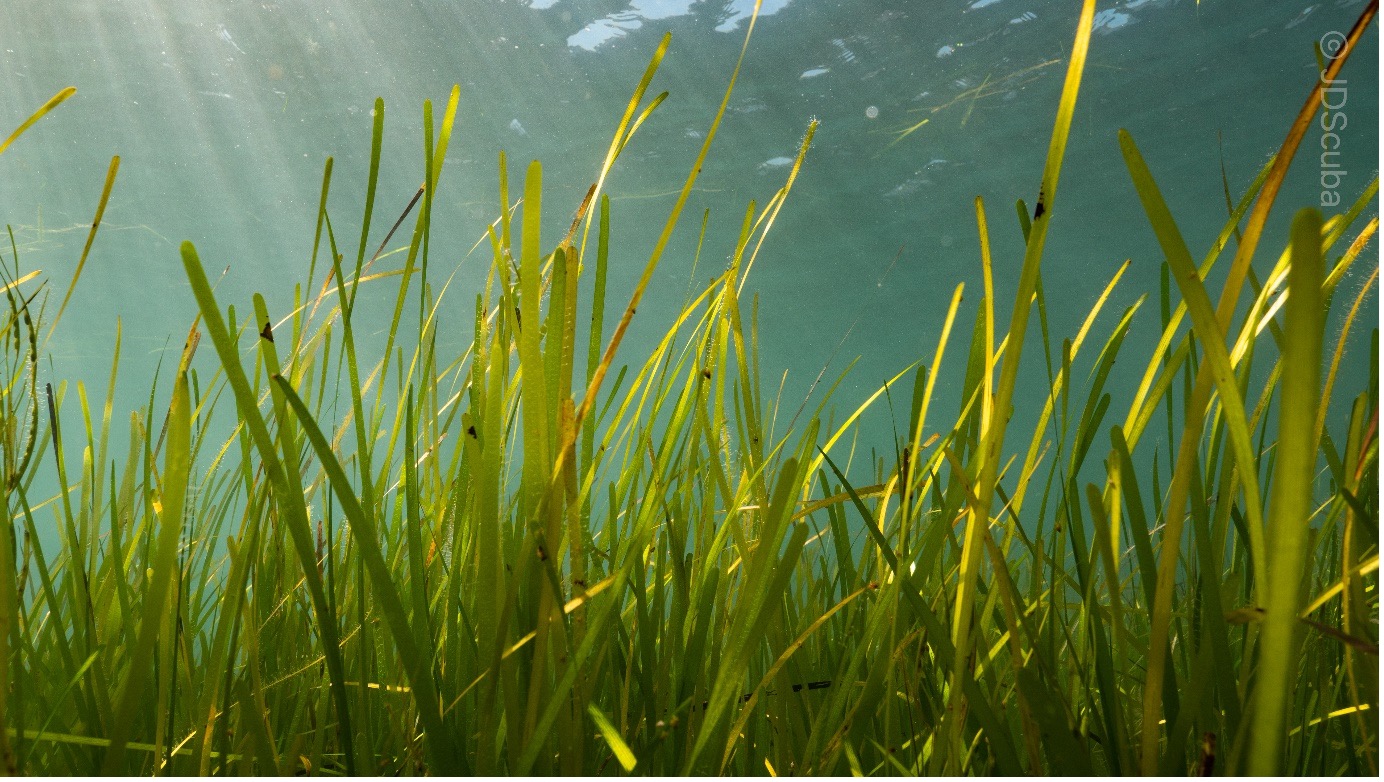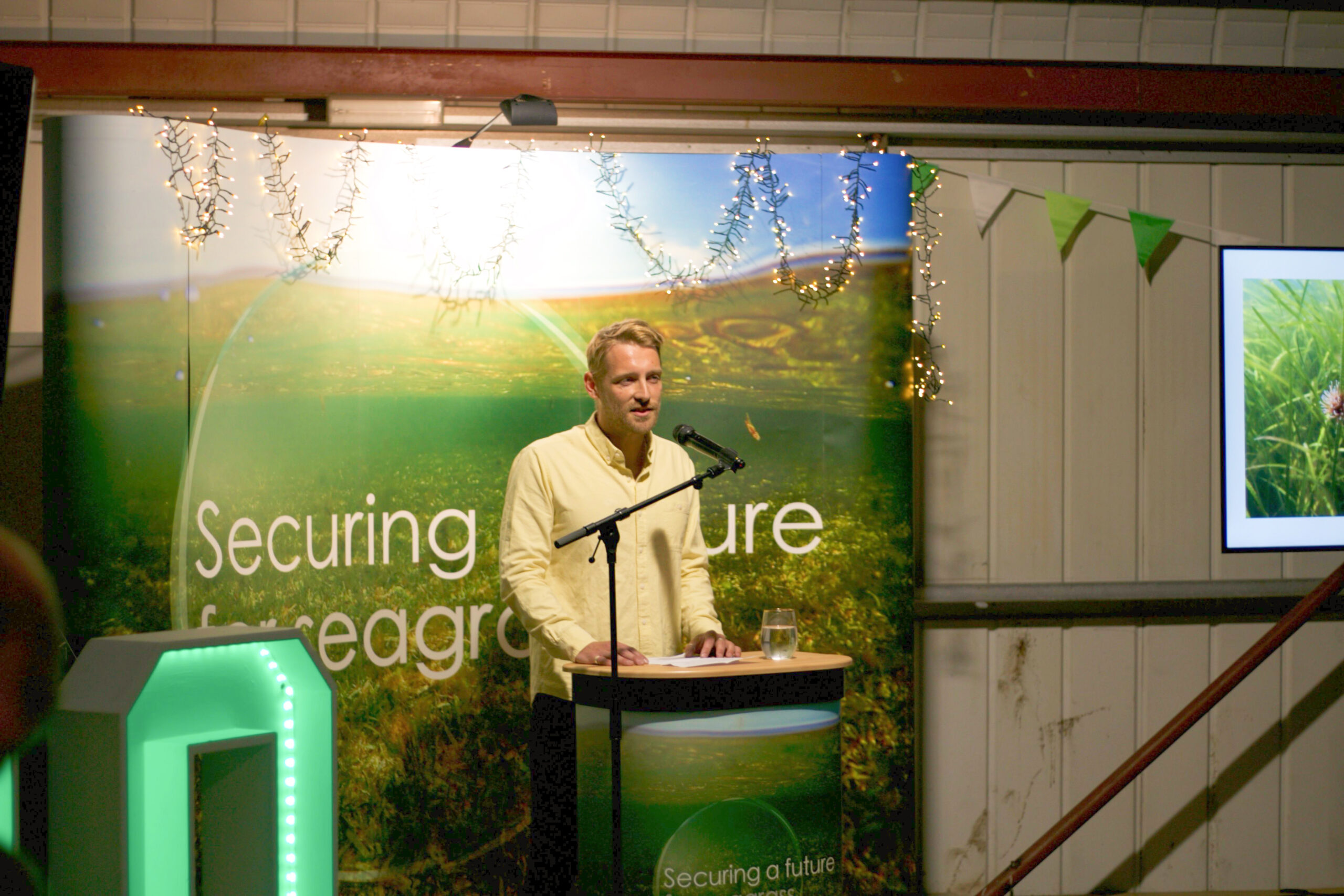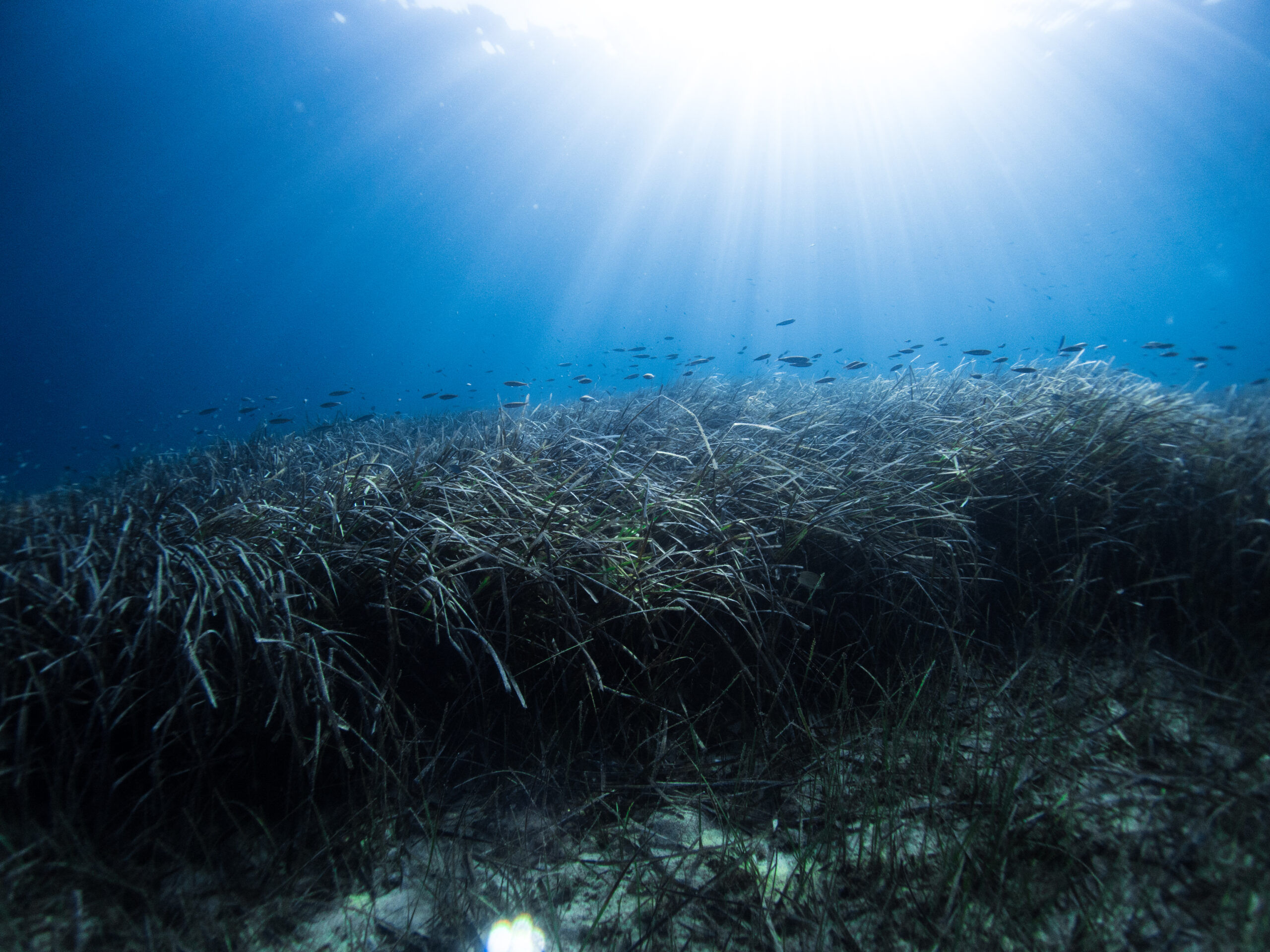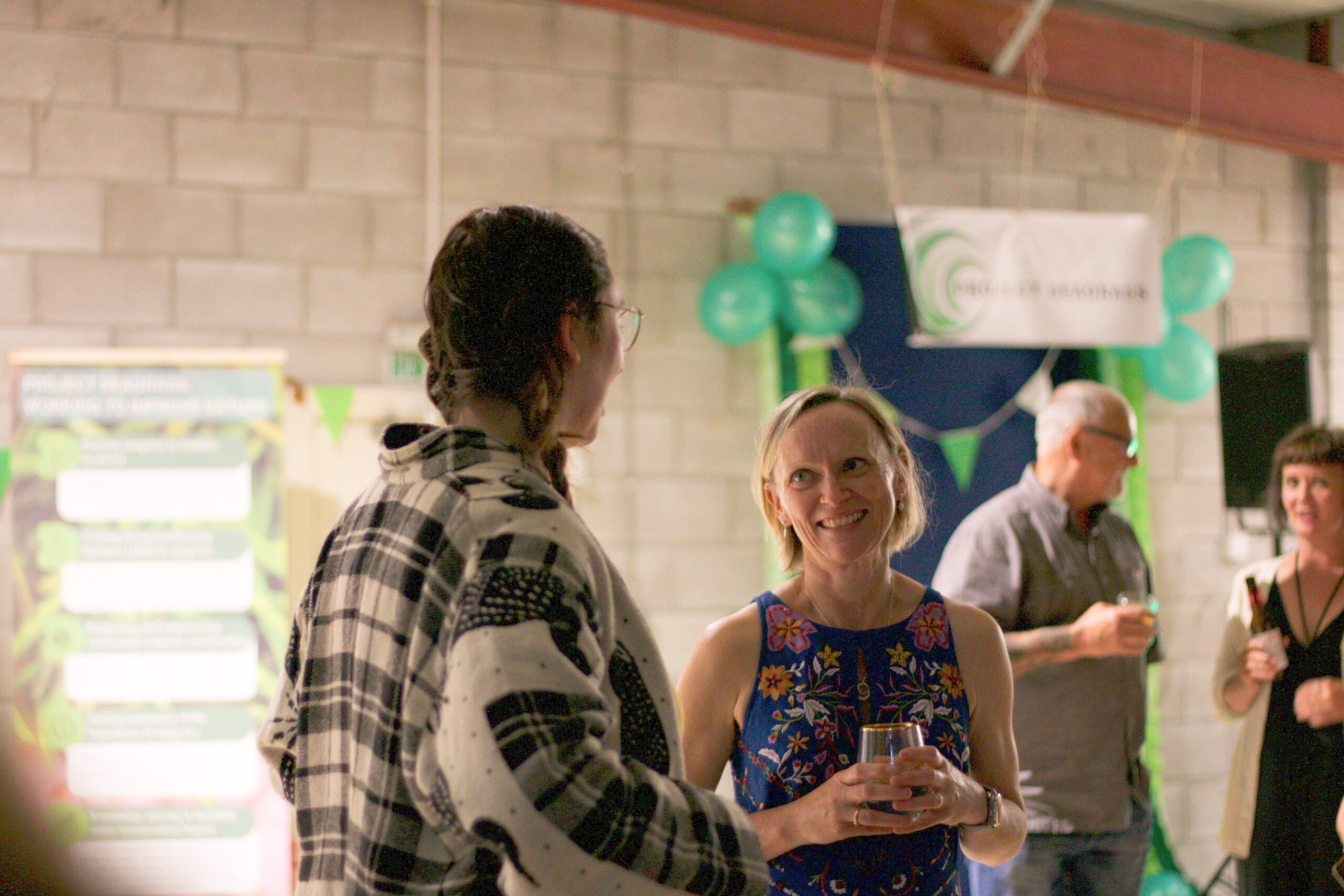Reflecting on 10 years of Project Seagrass
Project Seagrass was created on the 29th July 2013 with the vision of saving the worlds seagrass. As we approach our 10th birthday, we’re looking back on the last 10 years with our founder Ben Jones and CEO Leanne Cullen-Unsworth.

Where we’ve come from
Reflecting on 10 years of Project Seagrass, Dr. Benjamin Jones, one of the organisations founders, it’s Chief Conservation Officer and the current President of the World Seagrass Association, said:
“We have all heard the story of two students bonding over their interest in seagrass meadows, both with different visions of the approach needed to conserve them and joining forces with their supervisor to, at first, create a non-profit association.
I was not always interested in seagrass. In fact, I stumbled upon it in 2011 while on holiday in Dominican Republic. At the time I was mad for coral reefs, I had bought a new underwater camera, rented all the coral reef ID guides I could from the Swansea University library, and had the intention of spending two weeks snorkelling on the reef. To get to the reef though, I had to snorkel over 500m of this green stuff. And this green stuff captivated my attention. It was full of fish, invertebrates, all different shapes, sizes and colours. There were even different types of this green stuff – some that was like normal grass and some that felt like spaghetti. I think I got to the reef twice during that holiday – twice in two weeks. Instead, every day was spent in the green stuff. I was hooked, this green stuff was my calling, and I wanted to learn everything I could about it. If only I hadn’t filled my bag with coral reef books.
Fast forward 18 months and I remember quite vividly where the name for the organisation that we are celebrating came from, and the vision that I had for what that name meant.
It was a sunny day in May, a couple of weeks before my 22nd birthday, and I was on a train on my way home from West Wales. I had this square steel frame, a quadrat, fastened to my backpack and a cooler bag full of seagrass samples around my shoulder. I remember a few people asking me what on earth it was, and what I had been doing, to which I responded rather proudly “I’ve been surveying and sampling seagrass”. Yet, I quickly realised that they had no idea what I was talking about – they didn’t know what seagrass was. It was that train from Tenby to Swansea where I thought to myself, seagrass needs a voice. People do not have a clue that this group of plants even exists, let alone what they provide. Thoughts and feelings that each one of us directors arrived at independently.”

“When I first uttered the words “Project Seagrass”, I was inspired by Project Tiger, launched in the 1970’s by the Indian Government, and now the largest species conservation initiative of its kind in the world. I was also inspired by Project Purple, Apples codename for what we now know as the iPhone. When I first uttered the words Project Seagrass, it symbolised a codename for conserving the world’s seagrass meadows, whether directly, just as Project Tiger has done for tigers, or indirectly through diverse means of communication, research and innovation, just like what was needed to create the iPhone.
To all of us, Project Seagrass symbolises a much larger vision and movement, that transgresses us as individuals, as an organisation, and as a community. To me it symbolises a vision for seagrass itself, and for the people and biodiversity that depend on it – a vision for this quirkily plant that has existed for 140 million years, and seen species and civilisations rise and fall around the coastlines it has inhabited. Project Seagrass is a vision for this group of plants that needed a voice in the world.
A lot has changed in the last 10 years. RJ has had two children, Leanne and Richard have had three, and I have had four campervans, but our visions for what Project Seagrass is and represents have remained the same. Project Seagrass represents a long-term vision to secure a future for the world’s seagrass, a vision to champion the thousands of individuals working towards that future with us, a future where one day, Project Seagrass may complete. Where Project Seagrass may no longer needed.”

Acknowledging who got us here, and where we’re going
Dr. Leanne Cullen-Unsworth, Chief Executive Officer of Project Seagrass, said:
“Across the Project Seagrass team, I think we have all had our different journeys towards the realisation that seagrass is a critical habitat that supports life on our planet. For me, I connected with seagrass accidentally, back in the early 2000s researching marine resource use patterns in the Wakatobi in Indonesia for my PhD. I started that research imagining significant local dependence on coral reefs and mangrove forests, I had no idea that seagrass was so relied upon by so many people, and that it sustained life and lifestyles to such an extent. And that is a pattern that you see across the globe, everywhere there is seagrass, there are people that depend on it for food or subsistence, or cultural fulfilment. It delivers wellbeing across its range in so many different ways.
And that is why we are looking forward to a future in which seagrass thrives in harmony with people. But there is still a lot of work to do to secure this future, and for now, Project Seagrass and other organisations like us are definitely needed. And so is the incredible support that we have had behind us over the past ten years. We need to keep the momentum going, we have started something and got people’s attention, the world seems to be listening, and so now is the time for us to work even harder at sharing our message on the importance of nature for humanity and why we need to do more to protect and repair our beautiful world. Seagrass for me is an ideal example of a habitat that we can use to clearly demonstrate human-nature compatibility, because we’re not something separate from nature, we are a part of it. People are part of the ecosystem, and we have to acknowledge that and find solutions to the biodiversity and climate crises that support both planet and people.
With Seagrass we have a huge opportunity to drive change. Degradation and loss continue, but right now we still have some stunning, dense, healthy meadows that are teeming with life. We have to do more to protect these. But with seagrass, we also have a huge opportunity to reverse the trend of loss and restore this habitat. So we will continue to develop and deliver restoration science and action. We will keep working on the science that is needed to improve methods, on the education and outreach that is needed to bring people on this journey with us, on the advocacy that’s needed to allow us to scale up, and on the collaborations across sectors that are so important to achieve all of this by sharing knowledge and pooling resources for net gain.”

“It blows my mind a little bit how far we have come in the past ten years. We derived from the passion and enthusiasm of two students, and gained traction based on the science of one and then two academics, then have grown and developed with the support of so many other individuals and organisations who believed in our mission.
And lots of you are here tonight to help us celebrate, so on behalf of all the Project Seagrass directors I want to thank all of you for your support and encouragement over the years.
I would like to take this opportunity to also thank our amazing team, who share and now help shape our mission, so thank you (in no particular order): Eve, Danny, Emma and Emma, Betti, Louise, Sam, Stijn, Ally, Conor, Katy, Issy, Andrew, Anouska, Emily, Carly, Bethan, Alex, Esther, Lucy, Flo and Celia. I would also like to thank all the former staff, students and volunteers who have been part of that journey and have now moved on. As Ben rightly says, no one ever really leaves Project Seagrass.
I would also like to thank our trustees who have stepped in and given the critical support we needed at exactly the right time – your guidance is very much appreciated. A special thank you as well to our first trustee who was not a director – Bex, thank you so much for stepping in when we needed you!
On a personal note, I would like to thank mine and Richards family for all of their support and encouragement, which has always been unfaltering. My sister and dad and Richard’s mum and dad are here tonight, and they have helped so many times over the years with so many things, life in general, Seagrass-Watch, my dad supported us with the International Seagrass Biology Workshop back in 2016, and all of our families, mine, Richards, RJs and Bens have been completely behind Project Seagrass the whole journey so thank you all.
I want to thank my own beautiful children who have no choice but to love seagrass and just get on with it, and who continue to be my inspiration. Rohan, Nia and Eira, you are wonderful and a big part of why we do what we do.
Because fundamentally the work we do is about saving seagrass now for future generations and we are all inspired by that. We can be proud that our HQ is in Wales where we had the first parliamentary act that aims to protect the wellbeing of future generations and a new curriculum that recognises education to nurture ethical, informed citizens of Wales and the world. We’ve had some fantastic support from schools across Wales who have worked with us on projects, created projects for us, delivered amazing outreach materials through the recent Climate Cymru challenge – there’s an epic scratch game now available where you can learn about growing seagrass and bringing back biodiversity. And probably one of the most poignant and emotional moments we’ve had as a team was last year during the Running out of time relay event – taking a message in a baton from COP 26 in Glasgow, written by local school children, to COP27 in Sharm El Shake, we also added a message written especially for us by the eco club at our local school in Coychurch and our cyclists took a route past that school where the whole school came out and cheered the team on.
We’ll keep doing our best to inspire science and learning and action in the next generations and being inspired by them to do more now. As Sir David Attenborough said in ‘Saving our Wild Isles’ (as well as the words “Project Seagrass”) “The truth is, every one of us, no matter who we are or where we live, can and must play a part in restoring nature…we have the solutions (which we do), now is the time for action (which it has to be), and together we can save it (which we can).”
Thank you for being on this journey with us. Here’s to the next 10 years.

